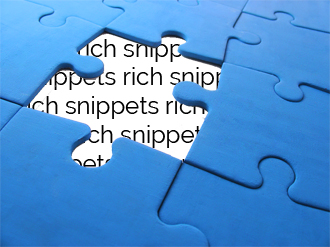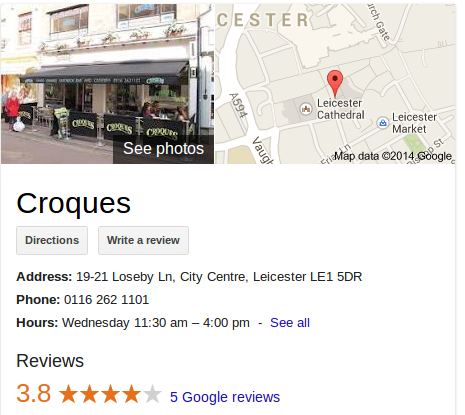Google Targets Manipulation of Rich Snippets
 In the last week or so Google has issued a previously unseen type of manual penalty focused on the misuse of rich snippets. Although we’ve yet to see one of these warnings for ourselves those that have been penalised have shared the message they’ve received.
In the last week or so Google has issued a previously unseen type of manual penalty focused on the misuse of rich snippets. Although we’ve yet to see one of these warnings for ourselves those that have been penalised have shared the message they’ve received.
“Markup on some pages on this site appears to use techniques such as marking up content that is invisible to users, marking up irrelevant or misleading content, and/or other manipulative behaviour that violates Google’s rich snippet Quality guidelines.”
It’s a pretty clear statement, someone is trying to game the system and Google are not amused. Whilst it’s not obvious whether this is a deliberate attempt to exploit rich snippets or just a lack of understanding of Google’s guidelines it seems the search giant is very keen to protect rich snippets from being abused or manipulated.
What Are Rich Snippets?
Most people will have seen search results where results include rich snippets even if they aren’t aware of what they are or how to implement them. In Google’s own words they describe the purpose of rich snippets as;
“to present users with more information about the content that exists on a page.”
Rich snippets can be an incredibly influential extension to any web listing. The goal, as with any listing is to generate the highest click through rates possible. The additional information rich snippets allow you display can be both eye catching and informative and help to ensure your listing stands out from the regular listings on a search results page. The additional information that can be added to a listing includes;
Reviews – The 1-5 star ratings that appear within a listing primarily for products and services.
People – The picture that show the author of the listing on the SERP as well as information about them.
Products – Price and availability information displayed about an individual product.
Businesses & Organisations – Locations, opening hours and other pertinent information.
Recipes – The star ratings as well as preparation time, calorie information and an image displayed alongside the listing.
Events – Addition information about dates, locations, times and ticket information can be included.
Music – Allows links to or samples of the songs to be included in the listing.
Why Would You Incur A Manual Penalty?
As with all Google products or tools they have guidelines in place which are designed to encourage webmasters to follow Google’s desired best practice. Too great a deviation from this desired path of use and you’ll likely be hearing from Google and incurring some form of penalty, although as yet it’s not clear exactly what that punishment is. The message sent to those suffering from a manual penalty states that they are being punished for three reasons;
- Marking up content that’s not visible to users. Google is a big fan of transparency, anything aimed at cloaking or disguising content is not well received.
- Marking up content that’s misleading or irrelevant. Presumably the aim here is to fool users into clicking on a result despite the page not delivering on the promise of the displayed rich snippet data.
- Other behaviour intended to somehow manipulate the system. There are a number of other ways rich snippets can be abused such as including an author snippet for content that wasn’t written by that author, product pages for example.
So What Does All This Mean?
In his recent blog post regarding the decaying legitimacy of guest blogging Matt Cutts concluded that “ultimately, this is why we can’t have nice things in the SEO space.” His rather frustrated and resigned tone perhaps reflects Google’s annoyance at some webmasters attempts to manipulate ranking positions and search results by any means possible. With rich snippet data being seen as hugely valuable to ensure searchers are finding the best result for their query, Google appears to be very keen to protect this from misuse. As always Google’s guidelines are gospel and those that chose to stray from that path will be held to account sooner or later.







